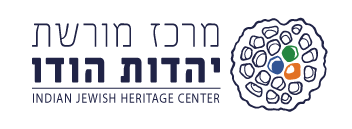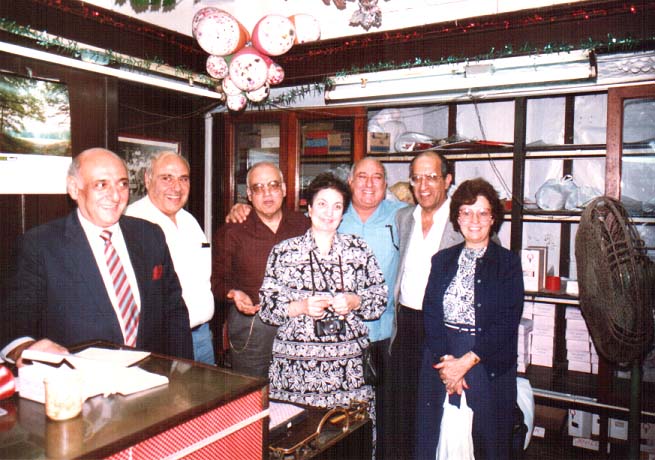While we had our very wealthy Jews who were industrial giants and large property owners, rich merchants and traders, there were also many small and medium size businesses in Calcutta that were owned and run by members of our community. There were always also many poor Jews in Calcutta who worked in Jewish-owned enterprises or were supported by Jewish charities. But predominantly the Jewish community was a middle-class community.
When one thinks of family-run businesses, the first one that comes to mind is Nahoum’s in the New Market. Nahoum’s is virtually a Calcutta institution, renowned all over the world for its Christmas cake. Nahoum’s started with Nahoum Israel Mordecai, who came from Iraq in 1870, going door-to-door with a huge tin box of Middle Eastern Jewish confections. Mr. Nahoum baked baklava, made plaited cheese, and sold other specialties like pista mulfoof. He moved to a small shop near the flower stalls in the front of the New Market in 1902, and then to its present location in 1916. This very large shop is the largest in the New Market. Nahoum’s has not changed its décor over the years. Its zinc panelled decorated ceiling imported from Italy, the showcases made of teak, and the classic wooden cash register is from Oregon, USA give the shop its distinct, if now somewhat antique and beaten look. The old world charm, the warmth of Norman who ran the shopfrom 1948 – 1999, Solo who worked along his elder brother, and the late David Nahoum made the shop a favorite social space for all communities to inter mingle and enjoy their time in the New Market.
There were other Jewish owned shops in the New Market: British Confectioners was another confectionary that was owned by the Judah family. It used to be on line with and very close to the Nahoum’s shop. It sold many of the same items as Nahoum’s did.
A Tobacconist shop stood at the corner of the New Market. It sold cigarettes, pipes, tobaccos, cigars and lighters. In those days people rolled their own cigarettes and pipe smoking was in fashion. The cigarettes they rolled were pure tobacco and had little or no nicotine. The shop was located just past the bookshops, and it was owned by the Elias family. There were several brothers who ran it with their father. This family moved to England.
David Elias, one of the elder brothers of the family, became one of the leaders of the Calcutta Jewish community in London.
There was also a cloth shop called Voile Arcade which was Jewish owned. The fabrics, like all fabrics in that era, were mostly imported from England. India was not allowed to make its own fine quality fabrics. The best shop in the Newmarket for dressmakers requirements such as threads, ribbons, embroideries was owned and served by a Jew named Abraham David.
Ernest David, a photographer, had his photograph shop in the New Market before the War. During the war he was interned in a Japanese concentration camp. When he returned he changed his name to Randall Adair and was a changed man. He gave away all his possessions and only took exclusive photographs.
On the right hand side when one faces the New Market, near the clock tower, there was a small shop that sold various kinds of loose tea and fresh coffee that was owned by the Bechor family.
On Lindsay Street, Daw Sen & Company made and sold pickles and chutneys of all kinds. Like the other shops in that area, it was a very spacious-not like the very small shops that line Lindsay Street today. Daw Sen was owned by the Mordecai family. They also exported their pickles overseas. Joe Solomon had a Beautiful Body and Weight Lifting Business on Lindsay Street.
Modern Radio on Free School Street near the Sudder Street Junction belonged to the Ezekiel family.
Park Mansions, not far from the Park Street crossing, was home to a tailoring shop owned by Mr. Abner called Regal Embroideries. Its specialty was richly embroidered silk and zari work. He made elaborate prayer caps (kippas), and embroidered bags for Tallitim (prayer shawls.) Esquire Tailoring did good business in making uniforms for offices like for peons, drivers. It belonged to David Cohen, a refugee from Rangoon in 1942, from his home in Sudder Street.
On Park Street there was Margaret Walker’s which was a famous hair dressing salon that was owned and run by Florence and Moses Judah. In its premises today is One Step Up. Florence had trained to be a hairdresser with the original owner, a Jewess from London by the name of Braham. She returned to London after the war she sold it to Jack Ferris and then it passed to the Judas who bought the company in 1948/49. The up-scale salon primarily catered to upper class Jewish, Paris, Anglo-Indian, expatriates and Indian clientele who were interested in western hair styles.
Maggie Meyers was trained in Paris as a dressmaker. When she returned to India she started her own dressmaking outfit in her home in Stephen Court. She catered to wealthy Anglo Indians, Jews, Armenians and was known for making elaborate wedding dresses and trousseaux. She also taught dress-making till the 1990’s. Maggie’s elder sister was married to the Nawab of Murshidabad and her middle sister Maureen ran a nursery school on Royd Street.
Jews also owned printing presses. Elite Press was owned by he Ezra family in Dacres Lane and there was another press that printed Race books and Turf News that was owned by the Einy family.
Saleh Baquall (from Arabic, meaning green-grocer) Abraham earned his living as a small trader, importing and exporting fez caps, Italian felt hats, piece-goods and spices which took him from Basra to Shanghai. He settled in Calcutta with a wife from Basra, Farha Musri. Saleh tried to introduce the Chinese rickshaw to Calcutta, but it failed to catch on. He sold the business within two years and started a taxi cab business with another Bagdadi Jew. The rickshaw came into use in Calcutta after 1914.

